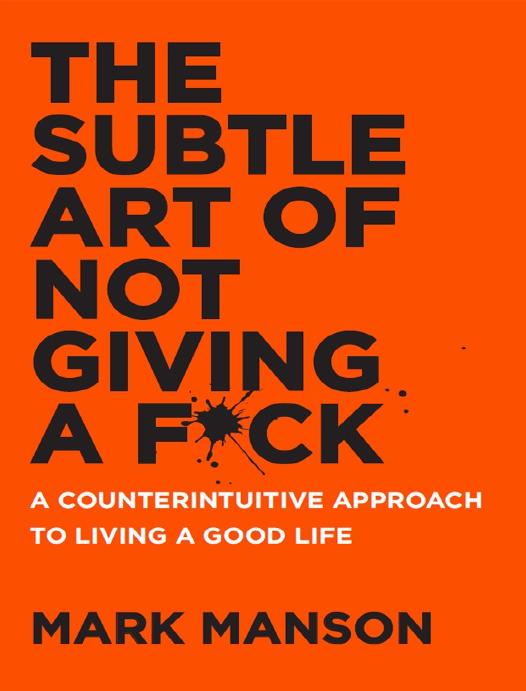The Subtle Art of Not Giving a F*ck by Mark Manson

Author:Mark Manson
Language: eng
Format: epub, azw3, mobi, pdf
Publisher: HarperCollins
Published: 2016-08-07T16:00:00+00:00
Victimhood Chic
The responsibility/fault fallacy allows people to pass off the responsibility for solving their problems to others. This ability to alleviate responsibility through blame gives people a temporary high and a feeling of moral righteousness.
Unfortunately, one side effect of the Internet and social media is that it’s become easier than ever to push responsibility—for even the tiniest of infractions—onto some other group or person. In fact, this kind of public blame/shame game has become popular; in certain crowds it’s even seen as “cool.” The public sharing of “injustices” garners far more attention and emotional outpouring than most other events on social media, rewarding people who are able to perpetually feel victimized with ever-growing amounts of attention and sympathy.
“Victimhood chic” is in style on both the right and the left today, among both the rich and the poor. In fact, this may be the first time in human history that every single demographic group has felt unfairly victimized simultaneously. And they’re all riding the highs of the moral indignation that comes along with it.
Right now, anyone who is offended about anything—whether it’s the fact that a book about racism was assigned in a university class, or that Christmas trees were banned at the local mall, or the fact that taxes were raised half a percent on investment funds—feels as though they’re being oppressed in some way and therefore deserve to be outraged and to have a certain amount of attention.
The current media environment both encourages and perpetuates these reactions because, after all, it’s good for business. The writer and media commentator Ryan Holiday refers to this as “outrage porn”: rather than report on real stories and real issues, the media find it much easier (and more profitable) to find something mildly offensive, broadcast it to a wide audience, generate outrage, and then broadcast that outrage back across the population in a way that outrages yet another part of the population. This triggers a kind of echo of bullshit pinging back and forth between two imaginary sides, meanwhile distracting everyone from real societal problems. It’s no wonder we’re more politically polarized than ever before.
The biggest problem with victimhood chic is that it sucks attention away from actual victims. It’s like the boy who cried wolf. The more people there are who proclaim themselves victims over tiny infractions, the harder it becomes to see who the real victims actually are.
People get addicted to feeling offended all the time because it gives them a high; being self-righteous and morally superior feels good. As political cartoonist Tim Kreider put it in a New York Times op-ed: “Outrage is like a lot of other things that feel good but over time devour us from the inside out. And it’s even more insidious than most vices because we don’t even consciously acknowledge that it’s a pleasure.”
But part of living in a democracy and a free society is that we all have to deal with views and people we don’t necessarily like. That’s simply the price we pay—you could even say it’s the whole point of the system.
Download
The Subtle Art of Not Giving a F*ck by Mark Manson.azw3
The Subtle Art of Not Giving a F*ck by Mark Manson.mobi
The Subtle Art of Not Giving a F*ck by Mark Manson.pdf
This site does not store any files on its server. We only index and link to content provided by other sites. Please contact the content providers to delete copyright contents if any and email us, we'll remove relevant links or contents immediately.
What's Done in Darkness by Kayla Perrin(25889)
Shot Through the Heart: DI Grace Fisher 2 by Isabelle Grey(18543)
Shot Through the Heart by Mercy Celeste(18436)
The Fifty Shades Trilogy & Grey by E L James(18071)
The 3rd Cycle of the Betrayed Series Collection: Extremely Controversial Historical Thrillers (Betrayed Series Boxed set) by McCray Carolyn(13541)
The Subtle Art of Not Giving a F*ck by Mark Manson(13369)
Scorched Earth by Nick Kyme(12185)
Stepbrother Stories 2 - 21 Taboo Story Collection (Brother Sister Stepbrother Stepsister Taboo Pseudo Incest Family Virgin Creampie Pregnant Forced Pregnancy Breeding) by Roxi Harding(11790)
Drei Generationen auf dem Jakobsweg by Stein Pia(10501)
Suna by Ziefle Pia(10414)
Scythe by Neal Shusterman(9638)
International Relations from the Global South; Worlds of Difference; First Edition by Arlene B. Tickner & Karen Smith(9008)
Successful Proposal Strategies for Small Businesses: Using Knowledge Management ot Win Govenment, Private Sector, and International Contracts 3rd Edition by Robert Frey(8788)
This is Going to Hurt by Adam Kay(8207)
Dirty Filthy Fix: A Fixed Trilogy Novella by Laurelin Paige(6788)
He Loves Me...KNOT by RC Boldt(6185)
How to Make Love to a Negro Without Getting Tired by Dany LaFerrière(6021)
Interdimensional Brothel by F4U(5652)
Thankful For Her by Alexa Riley(5510)
